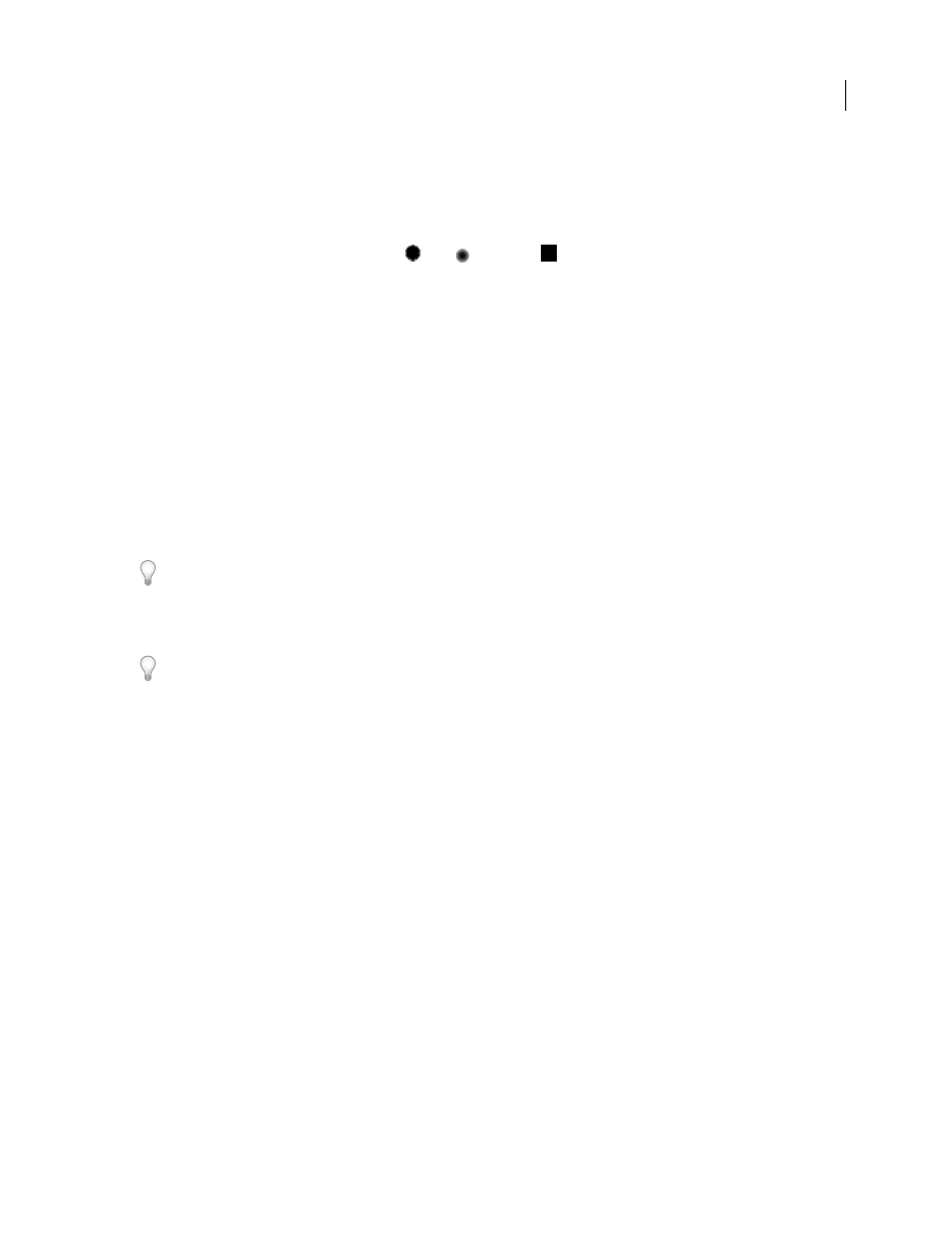Adobe After Effects CS3 User Manual
Page 478

AFTER EFFECTS CS3
User Guide
473
Work with Vector Paint brushes
Vector Paint includes three brush types: Paint, Air, and Square. These brush types define the shapes and performance
of both the Paintbrush tool and the Eraser tool. All brush types but the Air brush include a Feather setting.
❖
Do one of the following:
•
In the Vector Paint toolbar, click the Paint
, Air
, or Square
button.
•
In the Effect Controls panel, click the current Brush Type setting (Paint, Air, or Square) repeatedly to cycle
through the brushes until the one you want is selected.
With increased Feather and reduced Opacity settings, Paint brushstrokes may resemble Air brushstrokes. However,
when you paint a single stroke that crosses itself, the two brush types produce different results. Air brushstrokes build
up opacity as the stroke crosses itself. Paint brushstrokes don’t build up opacity within the same stroke, whether they
cross themselves or not. To increase opacity with Paint brushstrokes, create multiple strokes over the area (like
multiple coats of paint).
Note: Each brush type is also available for the Eraser tool. When the Eraser tool is selected in the Vector Paint toolbar,
the name appears with “-E” after it in the Effect Controls panel. Also, if a tablet is installed and the stylus has eraser
support, Vector Paint automatically switches to eraser mode when you use the stylus eraser.
Brush Settings controls
Radius
Controls the size of the brush or eraser.
If you press Alt (Windows) or Option (Mac OS) when clicking the question mark representing the Radius value, a
Set Value dialog box appears. You can then type a Relative Radius, reducing the radius of each stroke by that
percentage. The default value is 100%, which produces no change in the stroke radii.
Feather
Controls the softness of brush or eraser edges (but doesn’t affect the airbrush).
When you drag to change Radius, Feather, or Opacity values, hold down Ctrl (Windows) or Command (Mac OS) to
reduce the size of the increments. To change the value by larger increments, hold down Shift as you drag.
Opacity
Controls the transparency of the paint or erasures.
Brush Type
Shows the brush type you selected in the Vector Paint toolbar in the Composition panel.
Color
Represents the paint color used to draw strokes. Select a new color by clicking the Color swatch and then using
the Color Picker, or by using the eyedropper to sample a color from the desktop.
When one or more strokes of the same color are selected, this swatch displays the color of those strokes. You can
change the color of the selected strokes.
Color Clone
When Color Clone is turned on, the brush behaves like a combination eyedropper and brush. The color
of the stroke is determined by the pixels at the position where the stroke begins. The Color swatch in the Effect
Controls panel’s Brush Settings displays the new sampled color. When you begin another stroke, a new group of
pixels is sampled and used to color that stroke.
The Color Clone affects strokes only while you draw; it has no effect on an already completed stroke. This brush
setting is the only one you can’t apply after drawing. Clicking either the eyedropper or Color swatch turns off the
Color Clone feature.
Stylus
The Radius option affects stylus sensitivity. When you select this option, the pressure of the pen on the tablet
changes the weight of the stroke as it is drawn. Lighter pressure decreases the radius (creating a thinner stroke), and
increased pressure increases the radius (creating a wider one). The Radius value setting indicates the maximum
radius amount. Use the tablet settings to adjust the pressure-width sensitivity for the pen.
Note: You can choose Stylus Radius even if no tablet is installed. This option affects strokes when wiggling is enabled.
